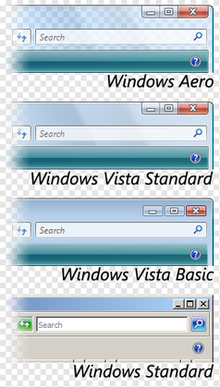
Install Windows Longhorn On Virtualbox Images Free
Advertisement Windows XP is old, and Microsoft no longer provides official support for the venerable operating system. But despite the lack of support, Windows XP is still running on 5 percent of all computers around the globe. Why are people still using Windows XP? Mostly due to work, research, or entertainment. Finding a copy of Windows XP isn’t easy. Finding some hardware to run it on is just as difficult.
Install Windows Longhorn On Virtualbox Images. 6/3/2017 0 Comments. Windows Movie Maker(new) – allows basic editing of home videos. Might not work all the time, but a huge leap from the format and install approach to troubleshooting. System File Protection(improved) – monitors and restores undesired changes to important Windows system.
That’s why the best option is to install Windows XP in a virtual machine so you can keep it on hand at all times. Here’s how you do it! Is Windows XP Really Available for Free? Microsoft knows that there are good reasons to jump back into Windows XP. That’s why they supply Windows XP Mode, a full version of XP that runs within Windows 7.
However, most of us have long since moved on from Windows 7, making this compatibility fix well, a little unhelpful. Luckily for you and me, there’s a relatively easy way to take the Windows XP Mode download and load it up in any virtual machine of your choosing. Before we begin, you need a few things: • Download and install.
• Download and install Were you ever faced with a.rar file and wondered how to open it? Fortunately, managing ZIP files and other compressed archives is simple with the right tools. Here is what you need to know.
• A copy of Windows XP Mode (see below). Step 1: Download Windows XP Mode Virtual Hard Disk Head to the.
Select Download. On the next page, select WindowsXPMode_en-us.exe, then hit Next. The Windows XP Mode executable will now download. These are the files you need to create the XP Mode virtual hard disk.
Update dbo.teststudents set lastname = ( case when (lastname = 'aaa') then 'bbb' when (lastname = 'ccc') then 'ddd' when (lastname = 'eee') then 'fff' else (lastname) end ) The statement work for the purpose but the else condition scan through every record in the table. Currently my code works fine if I perform Get-Content from txt file and then run the SQL update query, but only in case of small data. If the size of text. Stack Overflow. Log In Sign Up. SQL query for Bulk Update. Browse other questions tagged sql-server powershell qsqlquery sql-query-store or ask your own question. The below Stored Procedure can be used where in the SQL Server version 2005 where MERGE function is not supported. It first performs UPDATE using INNER JOIN and then INSERTS all records that are not present in the table.: The SQL for creating the Table and Stored Procedures is provided in the attached sample code. First of all there is no such thing as BULK UPDATE, a few things that you can do are as follow: If possible put your database in simple recovery mode before doing this operation. Drop indexes before doing update and create them again once update is completed.  Bulk Import (Insert and Update) using BULK INSERT and MERGE Statements in SQL Server 2008. The records from the input file will as per the importing table schema. So the values will be able to insert or update without any issue in the same order and data type. The records from the csv may already present in the table or may not. When no records present, all the records will be inserted (Ex: initial stage).
Bulk Import (Insert and Update) using BULK INSERT and MERGE Statements in SQL Server 2008. The records from the input file will as per the importing table schema. So the values will be able to insert or update without any issue in the same order and data type. The records from the csv may already present in the table or may not. When no records present, all the records will be inserted (Ex: initial stage).
Unfortunately, they’re Archive files and not executable files, meaning they’re currently Read-only. You need to extract these files to a new folder. Select Extract from the toolbar, then press the ellipsis icon next to the address bar. Browse to where you’d like to extract the files—your C: drive is fine—and select Make New Folder.
I’ve called my folder “Windows XP Mode,” but the choice is yours. When you’re ready, press OK, then OK again to start the extraction process. This can take a minute or two. Head to the folder you created when the extraction process completes. You’ll see the same list of files. The difference is that you can now edit these files as you see fit. Select the file named VirtualXPVHD.
Press F2 to rename. Insert a period between the “P” and the “V,” and press Enter. The file should immediately change into a virtual hard disk, and the icon to boot: Step 2: Install Windows XP Mode in a Virtual Machine Before we completed the XP Mode virtual hard disk extraction, I asked you to download and install VirtualBox.